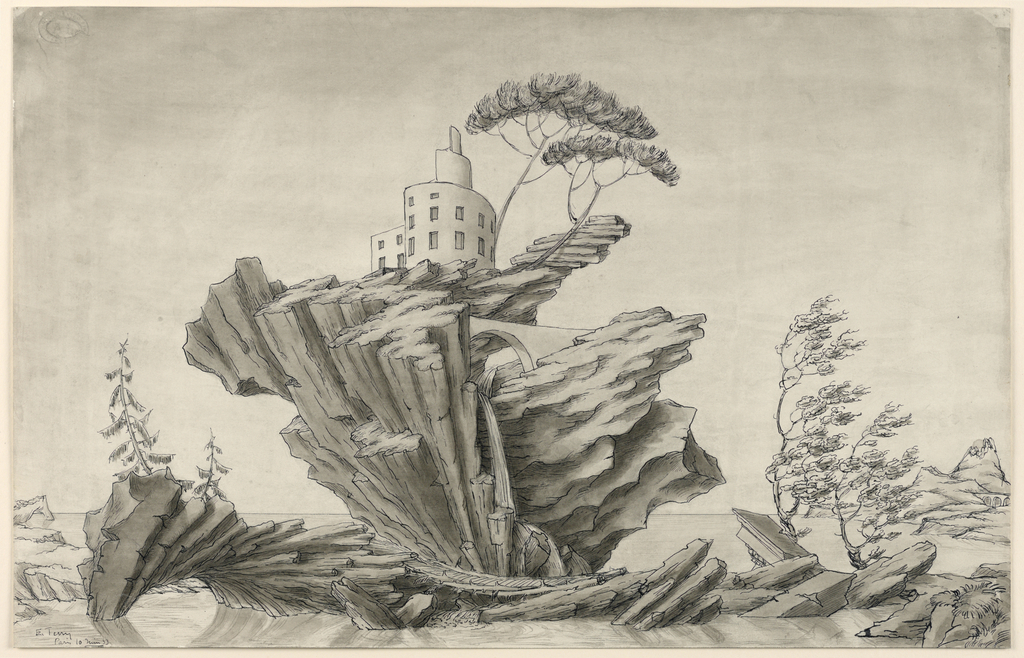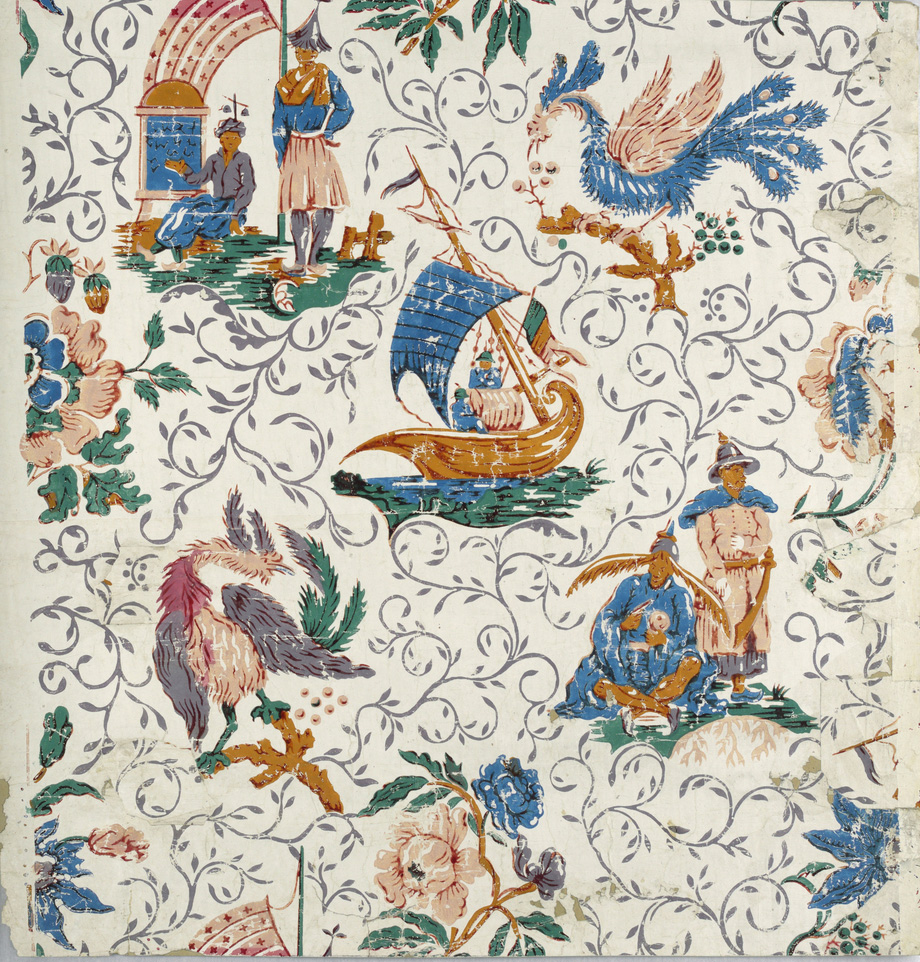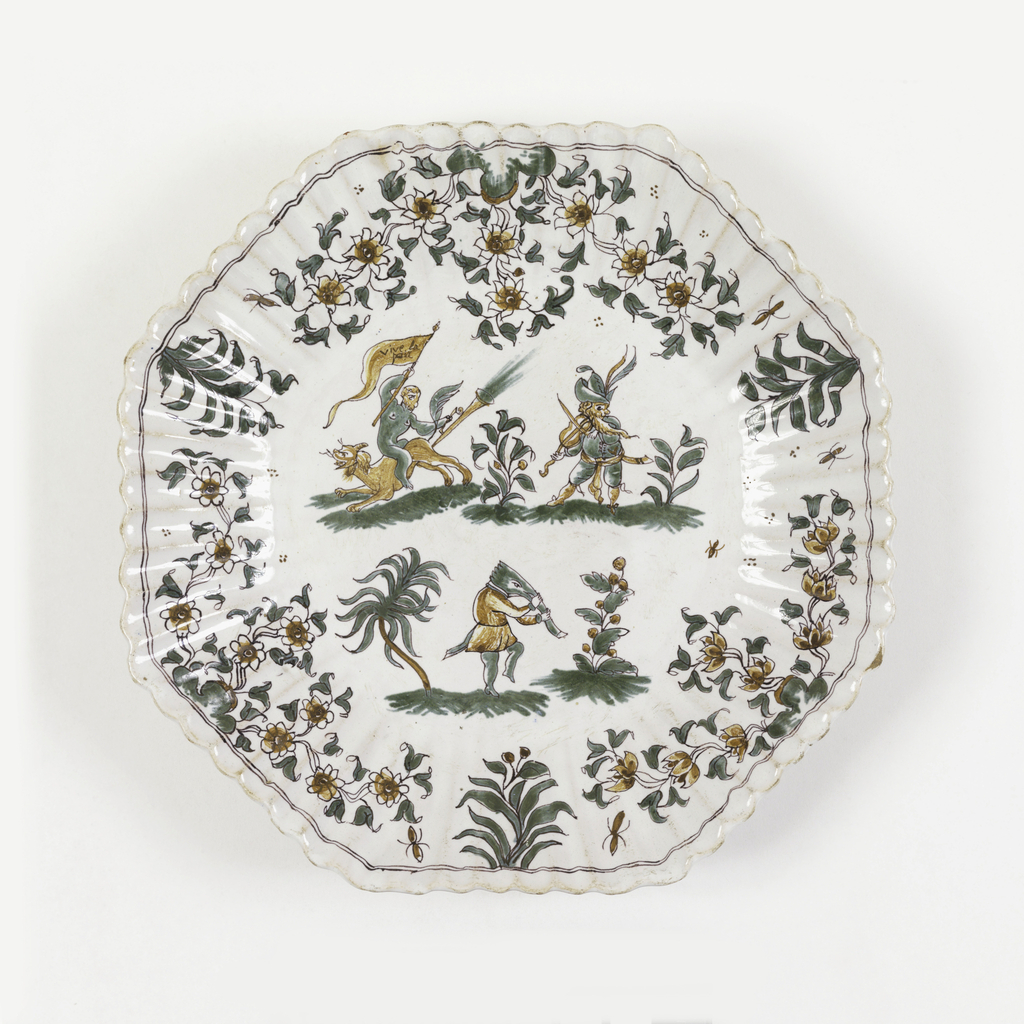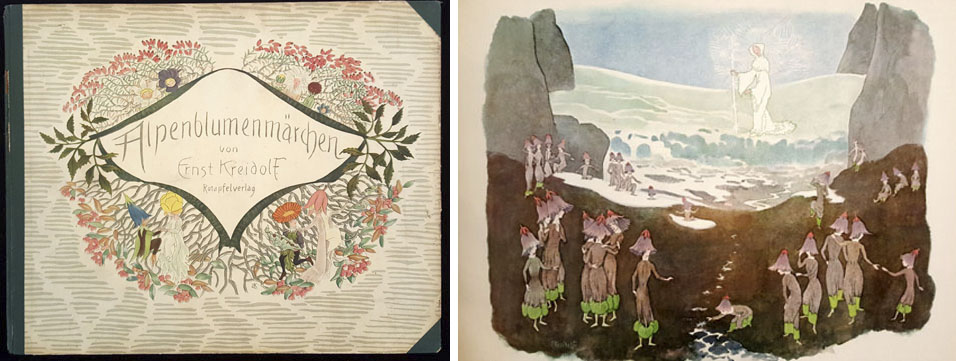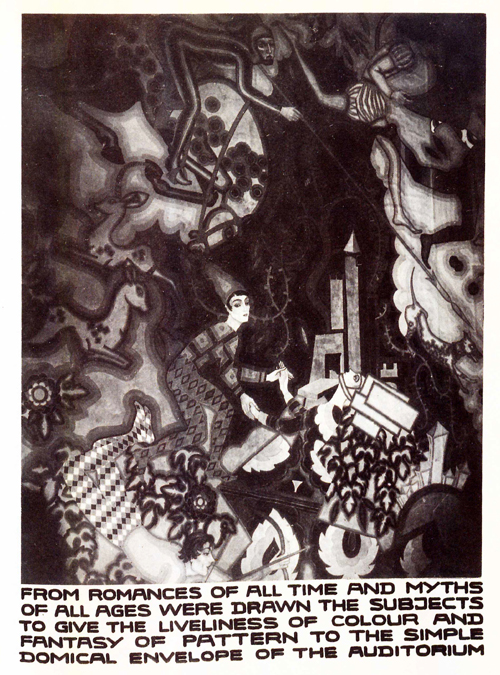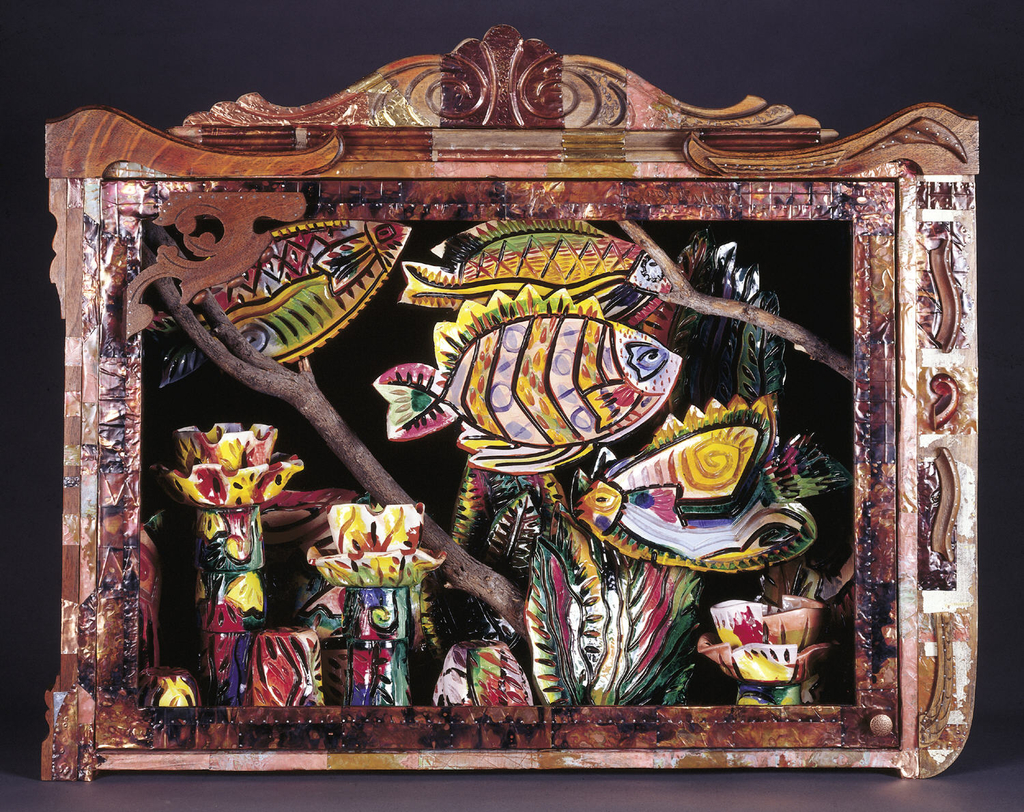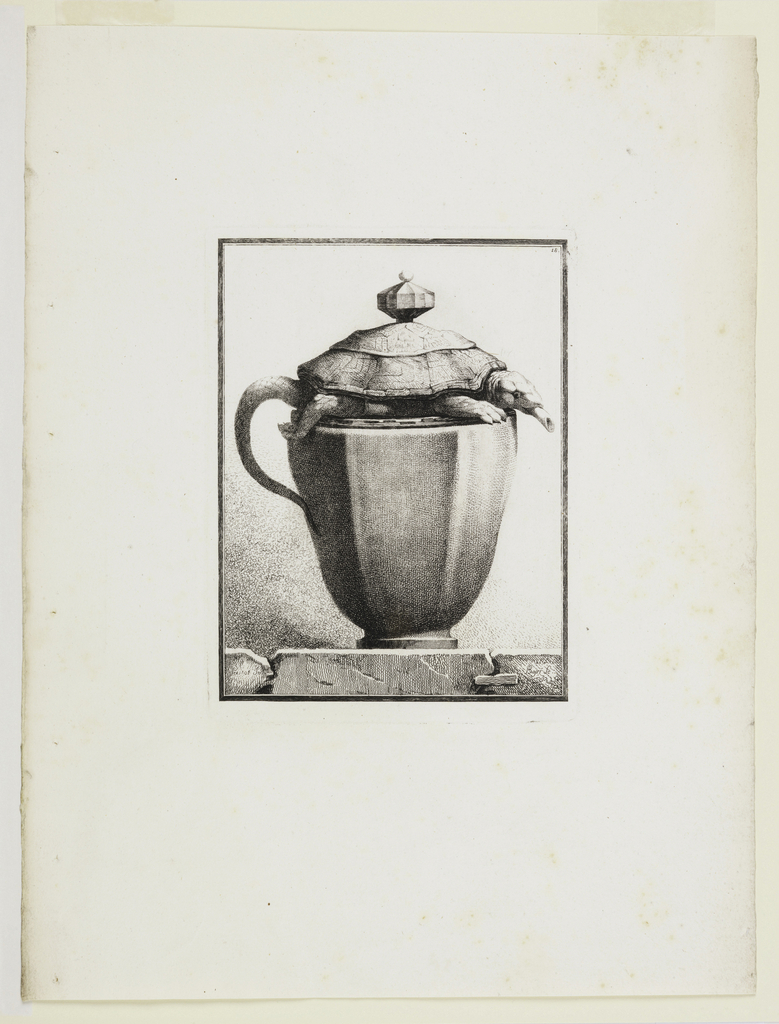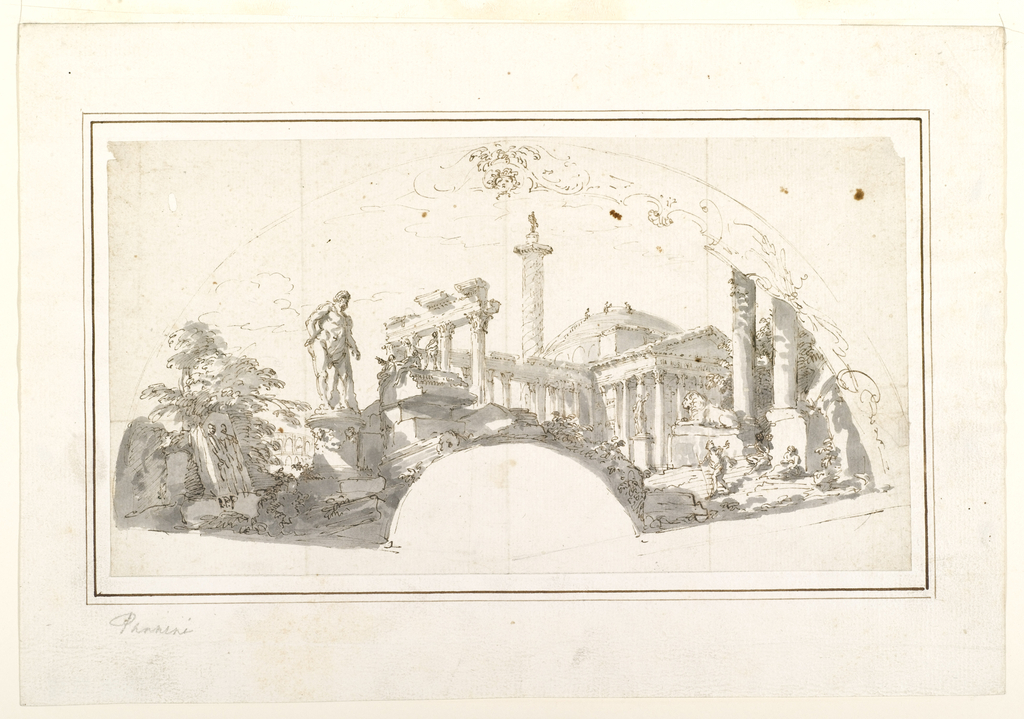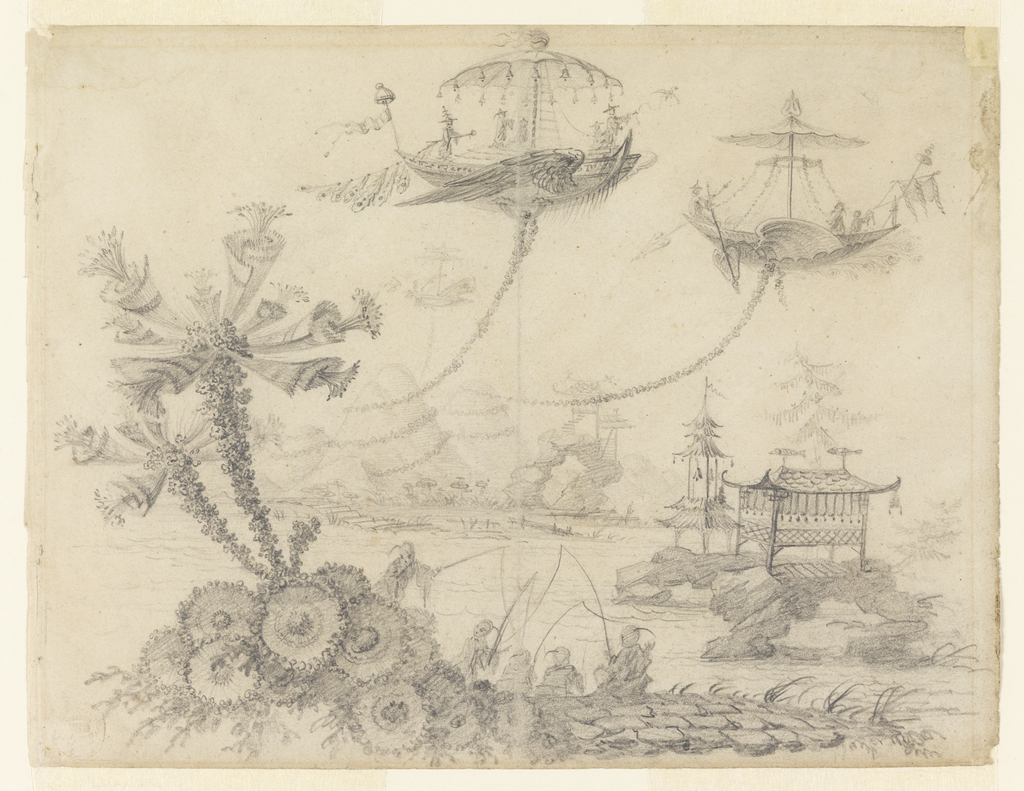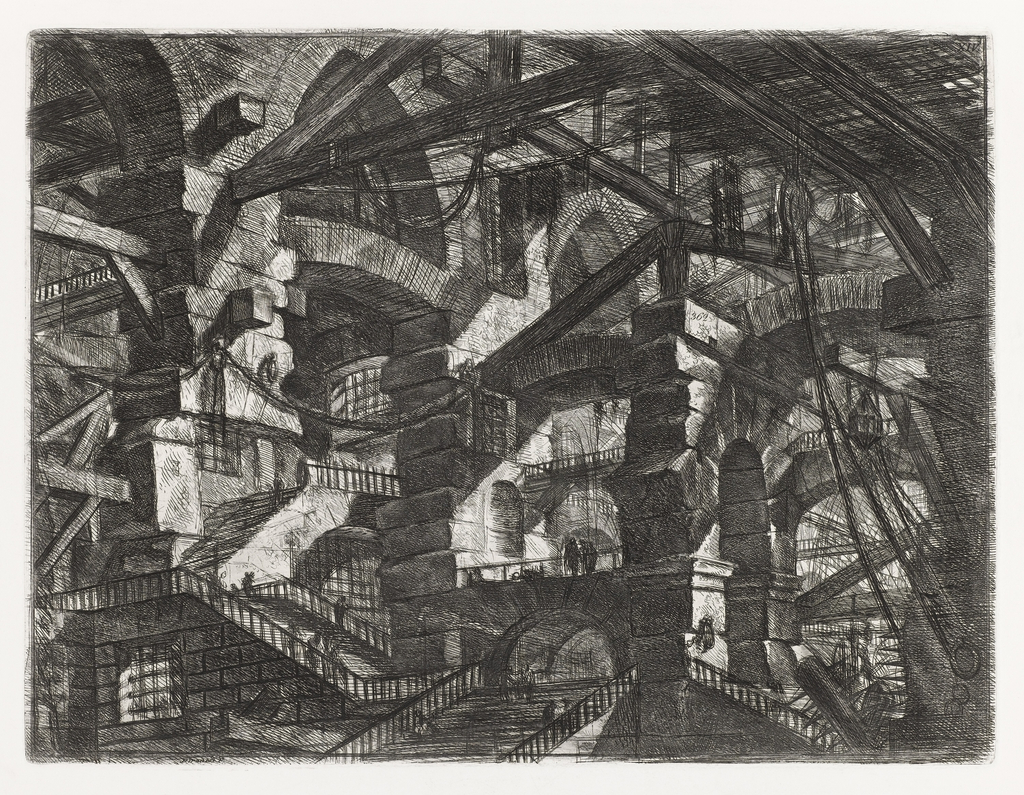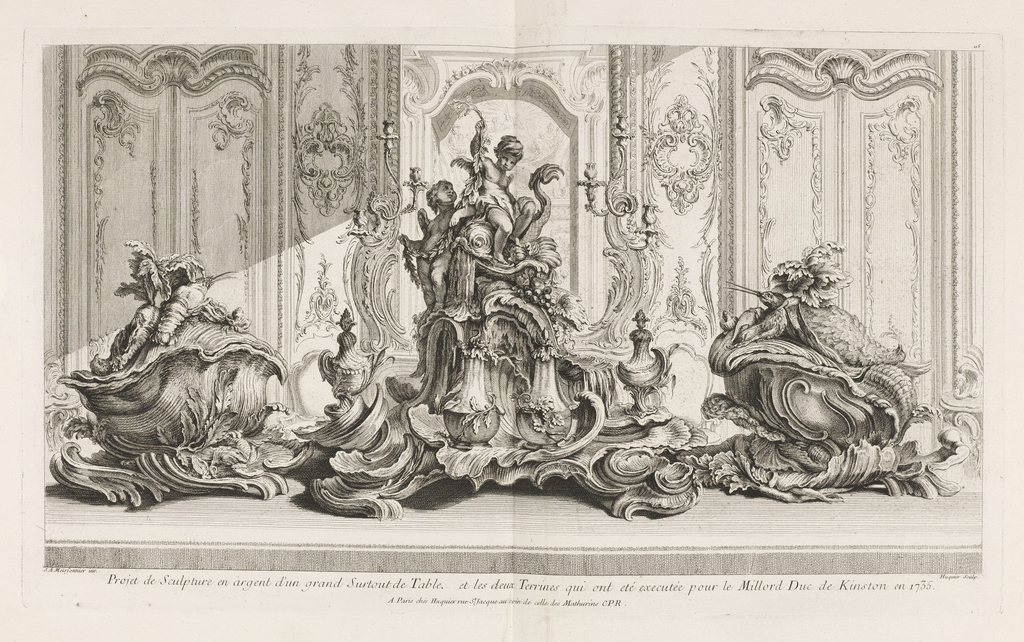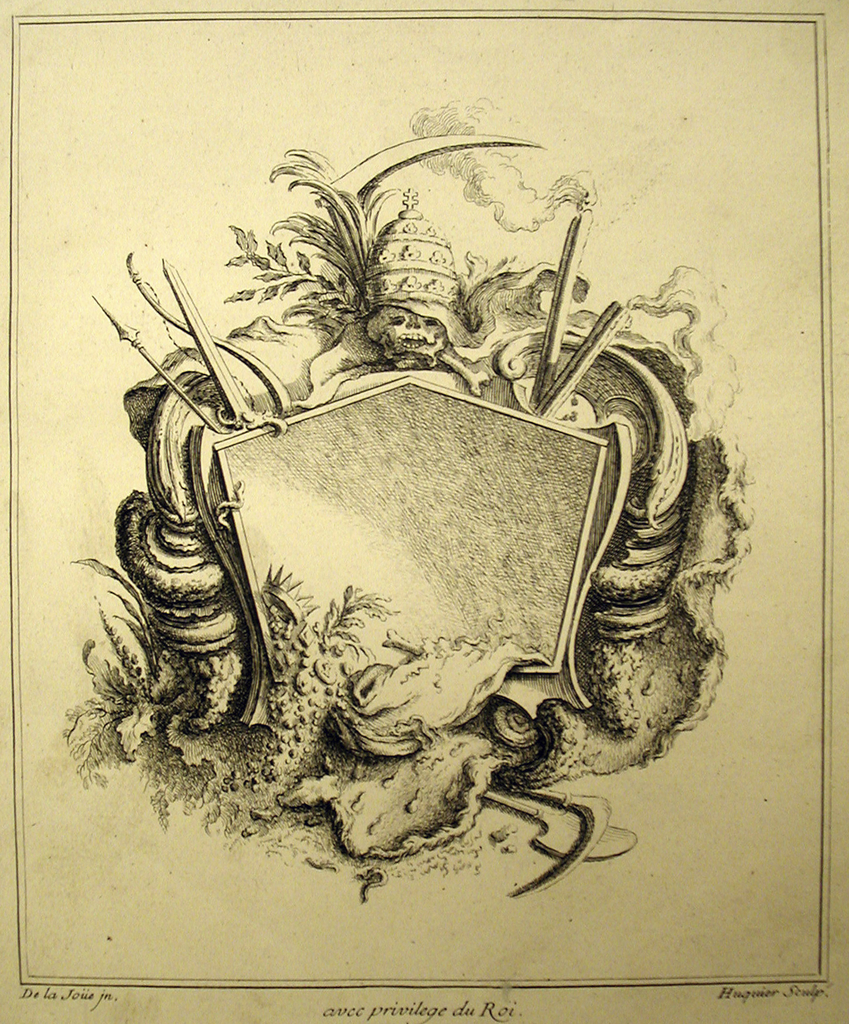Emilio Terry once described his creative work as “a dream come true,” an attitude reflected in his 1933 pen and ink sketch, Fantasy.[1] Although perhaps less familiar to modern audiences, Terry was one of the best-known designers of his time. Born to a wealthy family in Havana, Cuba, he later moved to France, where he lived and worked...
Though enigmatic, the iconography of this wallpaper—with its flowers blooming in full, Chinese phoenixes, and scenes of men from the East—expresses the Rococo and chinoiserie styles of the late Georgian and early Victorian periods in England. These styles actually have their origin in the seventeenth and eighteenth centuries, but throughout the 1800s, revival styles proliferated...
This Object of the Day celebrates one of many treasured objects given by Clare and Eugene V. Thaw to Cooper Hewitt, Smithsonian Design Museum. It is published here in memory of Eugene V. Thaw. Click on this link to read more about the Thaws and their gifts to Cooper Hewitt. The so-called “grotesque” style of decoration developed...
Alpenmarchen tales (Alpine Flowers) is a 1922 illustrated storybook that describes the woodland adventures of two acorn children who are swept away by the autumn winds. Author Ernst Kreidolf (1863-1956) was a Swiss painter largely known for his watercolor illustrations for children’s books about flower fairies and small creatures in the mountains, forests in nature....
Elizabeth Broman discusses Joseph Urban's theatre design. His murals for the Ziegfeld Theatre are now on view in The Jazz Age: American Style in the 1920s.
It isn’t every day that you can admire a piece in a museum and then use it to eat your dinner later that night. But the artist of this dinnerware set, Eddie Dominguez, strives for both artistry and functionality in his pieces. While these pieces look like a tromp l’oeil painting or a sculptural installation...
It may take a moment to figure out this eccentric vase design: is a tortoise sitting on a faceted plinth or are the two integrated into a single design? This eccentric print actually shows a vase, or an ewer with a lid shaped like a tortoise. Its mouth serves as the sprout, and its tail...
From the eighteenth century, painted fans were one of the most popular souvenirs for any grand tourist visiting Italy. In this period, fans were part of the complex network of courtly behavior and aristocratic social codes, and they were also indispensable elements for coquetry. Such fans were made with a variety of materials such as...
Ships, precariously tethered to mountain tops by garlands, hover over a landscape of pure fantasy in this graphite drawing by the French artist Jean-Baptiste Pillement (1728-1808). Pillement was known for his imaginative prints featuring chinoiserie designs that were in essence European variants of Japanese and Chinese motifs. Pillement was a prolific artist who operated in...
Prison design has been a topic of debate and a site for innovation, even in the eighteenth century. This etching is Plate 14 from a series of imaginary prison interiors designed by the Roman architect, designer, and print maker, Giovanni Battista Piranesi (1720- 1778). This print is both an exploration of the limits of the...
Eighteenth-century meal services were elaborate affairs, as exemplified in this print showing tureens and a table center piece designed by Juste-Aurèle Meissonnier for Evelyn Pierrepont, Duke of Kingston-upon-Hull in the 1730s. Meissonnier worked for Louis XV, becoming orfèvre du roi (goldsmith to the king) in 1724. This engraving is plate 115 in folio 72 of...
This is a design for a cartouche by the French académician, ornemaniste, and painter Jacques de Lajoüe (1687- 1761). It was etched by Gabriel Huquier as plate 4 in his Second book of Cartouches (Deuxième livre de Cartouches), which was published in 1734 (as established by Roland Michel). The ascribed date locates this at a...
Piranesi’s originality lay in his eclecticism. Pulling together influences from Egyptian, Etruscan, Ancient Roman, and Greek designs, Piranesi presented a hybrid design system that was rooted in his commitment to the stature and importance of the Roman design heritage. From this starting point, the architectural elements move from historical recreations to articulated fantasy. While his...
